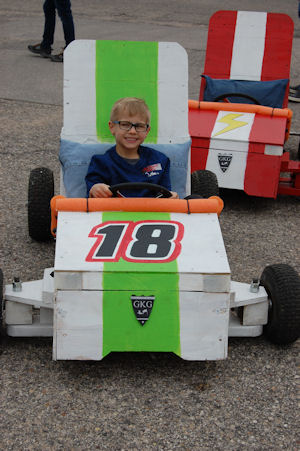One of the biggest disappointments that you will run into is getting your go kart put all together and then finding out that you cannot ride across the yard, much less climb a hill. The main reason why the go kart will not climb the hill is that the overall drivetrain ratio is not steep enough and therefore the engine stalls or the clutch smokes. Or on a belt drive the belt will smoke.
It is most disconcerting to put all his time into your go kart and then find out that it’s not going to perform the way you expected.
Several questions you need to ask yourself before you even start putting your go kart together are:
-What you expect this go kart to do?
-Do you expected it to climb a hill?
-Do you expected to go across the yard without any trouble?
-Or are you expecting the go kart to ride on flat surfaces and not encounter any terrain during its lifetime?
You may be one of these fathers who just put together a go kart and you’re running into this very problem. Well not to worry, this article is about how to solve this problem however there is a trade-off.
To first understand what the problem is I’m going to quantify it with than a brief statement and that is:
The amount of horsepower that is being dished out by the engine (and what the clutch can handle) is not enough to cause a go kart to climb a hill.
To get the gokart to climb the hill we need to find a way to use the horsepower (and clutch) that you have available in your engine to actually drive the go kart up a hill.
To get this to happen the ratio between the engine and the rear wheels needs to be made steeper. You maybe have read some of my articles and come across the rule of thumb which is: the rear drive sprocket needs to be approximately 85% of the size of the diameter of the tire. This particular rule of thumb applies to go carts that drive across flat terrain.
In order for a go kart to actually climb a hill in the ratio between the engine and the rear drive wheels needs to be steeper than 12 to 1. In fact it needs to be up close to 19 to 1 at the maximum.
What this would mean is that the rear drive sprocket would need to be larger than the rear wheels. As you can guess this is practically ridiculous or impossible to actually occur. You cannot have a rear drive sprocket that is bigger than the rear wheels because the rear drive sprocket will be touching the ground and would defeat the whole purpose of having a drive sprocket in the first place. So what needs to occur is that you need to make an intermediate system that will step down the ratio between me rear wheels and the engine.
This intermediate system is called a jack shaft. What effectively occurs with a jack shaft is that you divide in half the ratios and split them up between the drive sprocket and the jack shaft system.
The jack shaft basically is a shaft that holds the larger sprocket which in turn drives a smaller sprocket. The smaller sprocket then in turn drives a larger sprocket on the rear axle. This effectively splits the ratio between two shafts. Another way to look at this is that it is a mini transmission of sorts. It essentially is a one speed transmission.
A jack shaft requires a support system that is pretty rigid. Typically a jack shaft consists of a shaft that is supported by two bearings. However sometimes you can actually support the shaft solidly and have the sprocket’s have bearings on them so that they spin around the shaft. This can be a little bit more compact however it is a little bit more costly because it is custom.
The jack shaft and can be purchased easily through go kart houses because it is standard equipment especially with variable speed clutch systems that use jack shafting as part of their design.
To calculate a final ratio for a Jack shaft the system is looked at as two parts. The first part is the relationship between the engine and the jack shaft. The second part is the relationship between a jack shaft and the rear axle. Both systems have a ratio relative to one another. For example the engine may have a ratio of 4 to 1 to the Jack shaft. The Jack shaft may have a ratio of 4 to 1 to the rear drive axle. The final ratio to the engine would be the two ratios multiplied by each other, or the final ratio will equal 16 to 1.
So to recap to calculate the jack shaft ratio you basically take the ratio of the engine to the jack shaft and multiply it by the ratio of the jack shaft to the rear axle. In order to figure out the overall performance of your go kart you can use this final ratio and put it into the go kart performance program.
This may sound a little backwards but what you actually do is for the rear drive sprocket you make it 16 inches in diameter and for the engine and sprocket you make it 1 inch in diameter. And then you plug in your regular tire sizes and horsepower and weight of your go kart and then press calculate.
What you will get is an accurate assessment of how the go kart will perform. There are two things you will discover:
1. You’ll discover that the go kart will climb the hill
2. You’ll discover that the go cart will start to go slower.
The rule of thumb for increasing the ratio is that the go kart will go slower but you will be able to accelerate quicker. Acceleration is key for climbing hills, however there is a trade-off and that is your top speed will be decreased.
Typically the speed will be decreased to about 15 mph top speed versus a 25 to 28 mph top end speed.
This is the low cost solution for solving the problem of not being able to climb a hill. Typically a jackshaft system should not cost more then 30 to 40 dollars.
If you are looking to get more overall performance out of your go kart using the same horsepower that you have right now, then it might not be a bad idea to look into a variable speed clutch (Comet style clutch) which is designed to have steep ratios which are 19 to 1 at the very most but then the ratio changes automatically to be more in line with what a regular go kart has at the final ratio. The downside to this type of system is that it’s quite costly upwards of $180 to $230 for a variable speed clutch system.



I have a cart with a 8 hp motor, comet clutch and a jack shaft but it still doesn’t climb hills well…. The clutch is set @ 2200 rpm, I am thinking the clutch needs to engage sooner to get better belt grip, could that help? I recently replaced my worn clutch springs with new stiffer ones, and they killed my torque, way to much belt slip now.
This is such a good question that I wrote an article about it. Goto to this link to get your answer…
https://gokartguru.com/2009/09/calculation-aids/torque-averter-drive-train-calcs-why-is-my-chain-breaking/